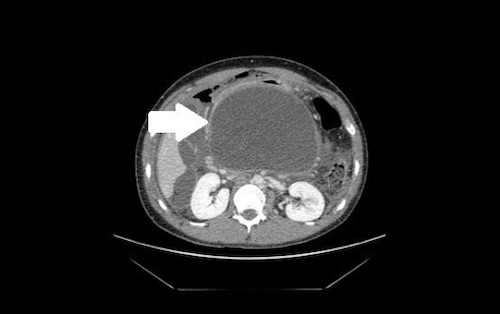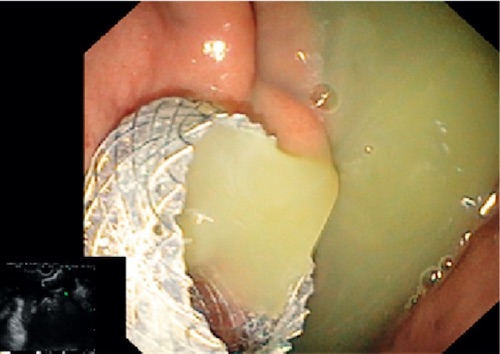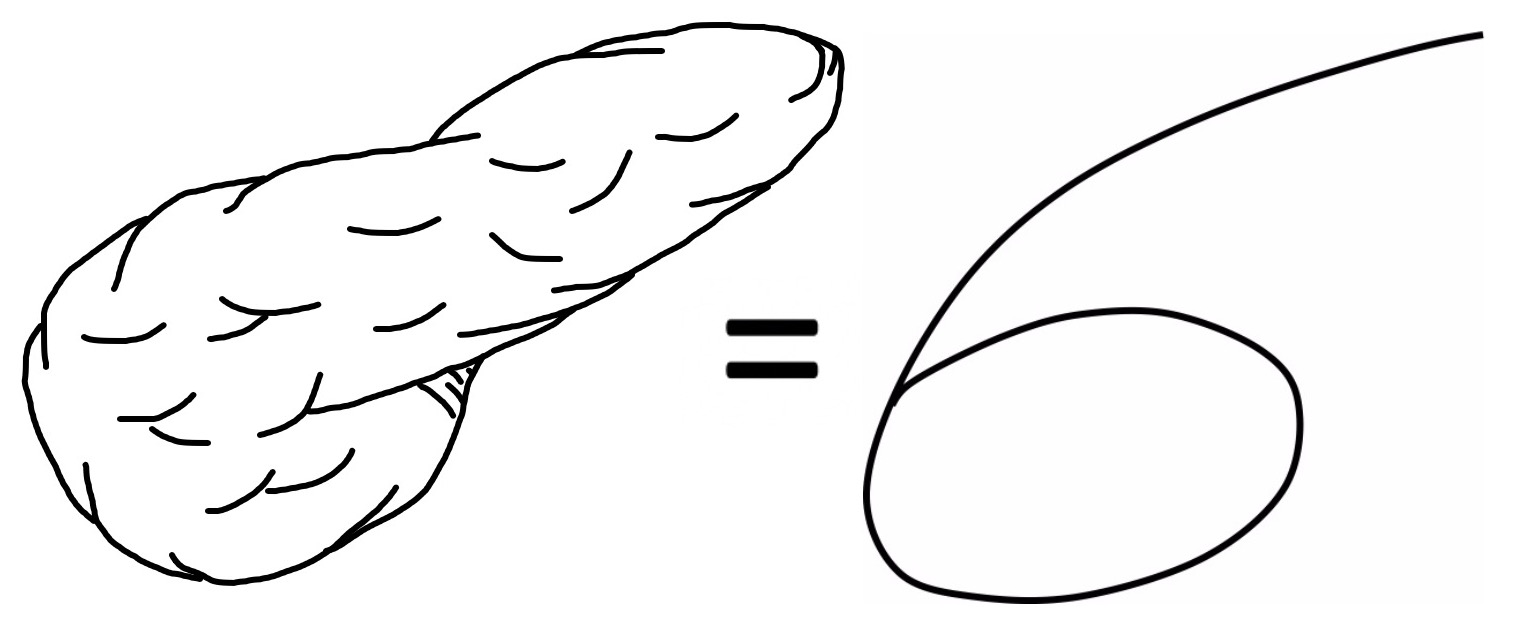Pancreas: Pancreatic Pseudocyst
Pancreatic Pseudocyst
General
- Definition: Collection of Pancreatic Fluid Outside of the Ducts (No Epithelial Lining)
- Fibrotic Capsule Forms Over 4-8 Weeks, Composed of Collagen and Granulation Tissue
- Most Common Cause: Chronic Pancreatitis
- Poor Predictors: ≥ 6 weeks or ≥ 6 cm Mn
Complications
- Infection
- Splenic Vein Thrombosis
- Pseudoaneurysm
Diagnosis/Definitions
- CT: Based on Revised Atlanta Classification
- Revised Atlanta Classification:
- Acute Pancreatic Fluid Collection
- ≤ 4 Weeks
- Homogenous Fluid Density – No Solid Component
- No Defined Wall
- Extrapancreatic & Confined by Normal Fascial Planes (None Intrapancreatic)
- Pancreatic Pseudocyst
- > 4 Weeks
- Homogenous Fluid Density
- Well Defined Wall
- Acute Pancreatic Fluid Collection

Pancreatic Pseudocyst on CT 1
Treatment
- Asymptomatic & < 5-6 cm: Conservative
- Symptomatic or > 5-6 cm: Internal Drainage
- Preferred Route: Endoscopic Cystogastrostomy or Cystoduodenostomy
- Requirements:
- Mature Cyst Wall (Most Important Prognosis Factor)
- Pseudocyst Wall Must be Adherent to Stomach or Duodenum
- External Percutaneous Drain Have Higher Risk of Complications & Pancreaticocutaneous Fistula
- Requirements:
- If Unable: Roux-en-Y Cystojejunostomy
- Use Full-Thickness Absorbable Sutures (Interrupted Closely Spaced or Running)
- Always Send Bx
- Absolute Contraindication: Pseudoaneurysm (Embolize First)
- Consider Endoscopic Pancreatic Duct Stent if Pseudocyst Communicates to the Pancreatic Duct (Internal Pancreatic Fistula)
- Fistula May Present as Recurrent Pseudocyst After Prior Drainage
- Preferred Route: Endoscopic Cystogastrostomy or Cystoduodenostomy
- Cystic Neoplasia or Technically Unable to Drain in the Uncinate Process: Requires Resection
- Ruptured or Unstable: Percutaneous/External Drainage
- Rarely Used – High Morbidity & Risk for Pancreatic Fistula

Endoscopic Cystogastrostomy 2
Mnemonics
Poor Predictors of Pseudocyst
- #6 – The Number of the Pancreas (Used in Other Mnemonics: PNET and Chronic Pancreatitis)
- Pancreas Looks Like a #6
- Poor Predictors: > 6 weeks or > 6 cm

#6 – The Number of the Pancreas
References
- Tuboku-Metzger VR, Seenath MM, Tan LC. Peritonitis secondary to traumatic duodenal laceration in the presence of a large pancreatic pseudocyst: a case report. J Med Case Rep. 2011 Oct 26;5:528. (License: CC BY-2.0)
- Anderloni A, Attili F, Carrara S, Galasso D, Di Leo M, Costamagna G, Repici A, Kunda R, Larghi A. Intra-channel stent release technique for fluoroless endoscopic ultrasound-guided lumen-apposing metal stent placement: changing the paradigm. Endosc Int Open. 2017 Jan;5(1):E25-E29.(License: CC BY-NC-ND-4.0)